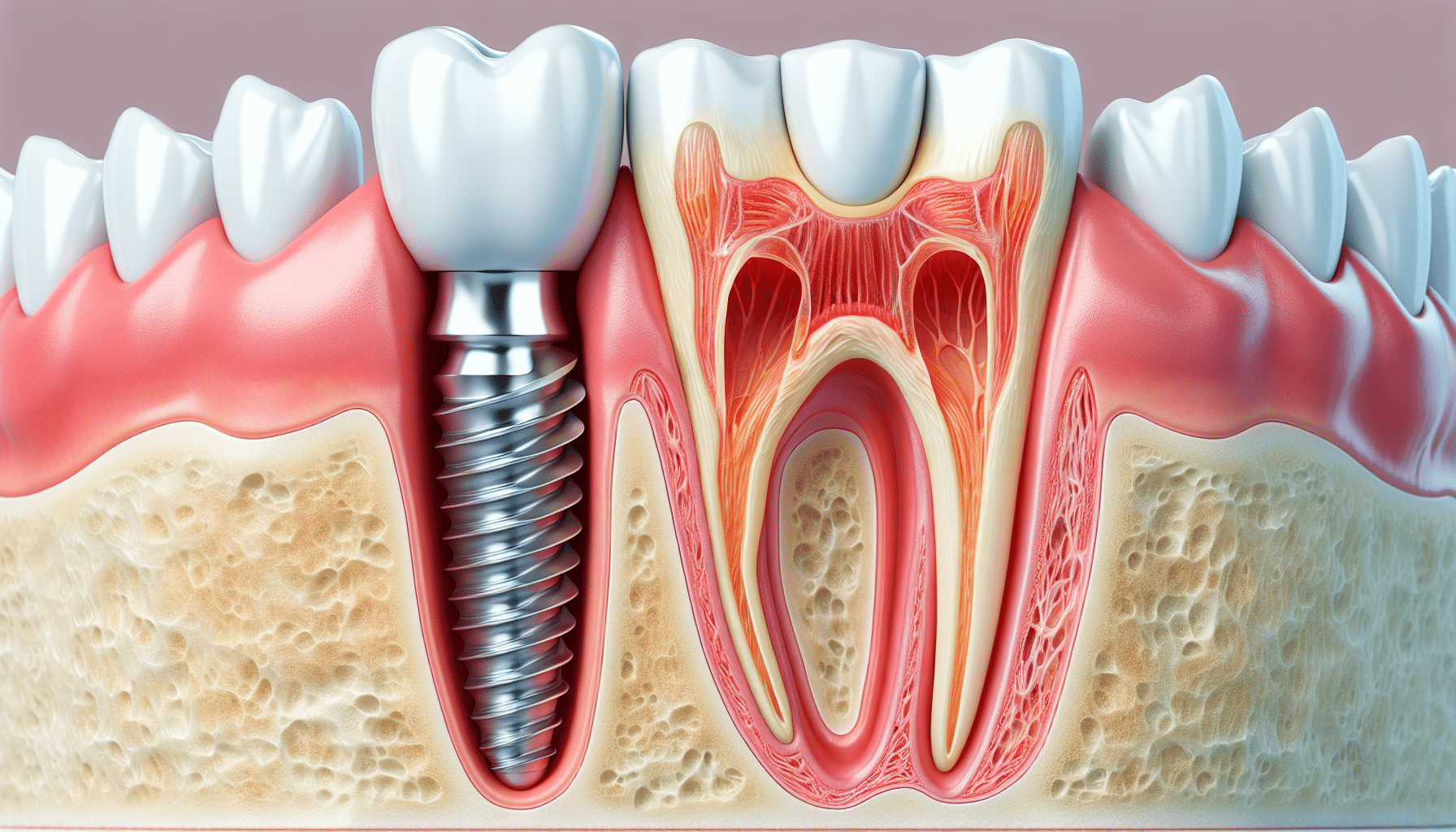The Basic Principles Of Dental Sense
The Basic Principles Of Dental Sense
Blog Article
The Ultimate Guide To Dental Sense
Table of ContentsWhat Does Dental Sense Do?All About Dental Sense7 Simple Techniques For Dental SenseThe Greatest Guide To Dental Sense
are clinical gadgets operatively implanted right into the jaw to recover a person's ability to chew or their look. They supply support for fabricated (phony) teeth, such as crowns, bridges, or dentures. When a tooth is lost due to injury or disease, an individual can experience issues such as quick bone loss, malfunctioning speech, or changes to chewing patterns that lead to discomfort.Dental implant systems include an oral implant body and oral implant joint and may additionally consist of a joint addiction screw. Dental implant vs bridge. The dental implant body is operatively placed in the jawbone instead of the tooth's root. The dental implant abutment is normally attached to the implant body by the abutment fixation screw and prolongs via gums into the mouth to sustain the affixed artificial teeth
(https://www.avitop.com/cs/members/dentalsense1.aspx)Structure of The Oral Implant System choosing dental implants, speak with your dental service provider about the possible advantages and threats, and whether you are a prospect for the treatment. Points to consider: Your overall health and wellness is a crucial aspect in establishing whether you are an excellent prospect for oral implants, how much time it will certainly require to heal, and the length of time the implant may remain in location.
Smoking cigarettes may affect the healing process and decrease the lasting success of the implant. The recovery process for the dental implant body may take several months or longer, throughout which time you commonly have a short-lived joint instead of the tooth. the oral implant treatment: Thoroughly comply with the oral hygiene directions given to you by your oral provider.
The Ultimate Guide To Dental Sense
Implant failing can result in the need for one more operation to deal with or change the implant system. Brings back the capability to chew Restores aesthetic look Helps keep the jawbone from shrinking as a result of bone loss Preserves the health of the bordering bone and gum tissues Helps keep nearby (neighboring) teeth secure Improves lifestyle Damage to bordering natural teeth during dental implant positioning Injury to the surrounding tissues during surgery, such as sinus opening Injury throughout surgical procedure (for example, crack of surrounding jawbone) Inadequate feature, such as seeming like the teeth do not attack with each other usually An experience that the tooth is loose or twisting in location arising from an abutment screw loosening Implant body failing (looseness of the implant body) because of systemic infection, which might be most likely in clients with unrestrained diabetes mellitus because of regional infection in bone and periodontals supporting the implant body as a result of postponed recovery, which might be most likely in individuals that smoke Trouble cleaning up the gum tissues around the dental implant, leading to inadequate oral hygiene Untreated periodontal disease Post-surgical numbness because of nerve impingement or damages Constantly notify wellness treatment companies and imaging technicians that you have oral implants prior to any magnetic vibration imaging (MRI) or x-ray treatments.
FDA is not conscious of any negative occasions reported for MRI or x-ray treatments with oral implants. Oral implants systems are usually made from materials that follow worldwide agreement requirements of the International Organization for Standardization (ISO) or ASTM International. These standards have information of what makes a safe product.

An oral implant is a framework that replaces a missing out on tooth. With screw-like tools, the cosmetic surgeon inserts an implant into the jawbone, and it acts as an anchor for a fabricated tooth, called a crown.
The Best Strategy To Use For Dental Sense
Some individuals are not eligible for oral implant surgery. It is for oral doctors to operate individuals with: severe illnessuncontrollable metabolic diseasebone or soft tissue condition or infectionIf these problems are fixed, a person can have the surgical treatment. In, oral doctors avoid operating individuals with: If individuals with any of the above go through oral implant surgical procedure, there is a greater threat of the dental implant failing.

Dental dental implant surgical treatment is a tailored procedure. It's not the same for everybody. But the following provides a basic introduction of what you can anticipate your dental practitioner, dental cosmetic surgeon, periodontist or prosthodontist to do: Place the dental implant operatively. Give you time to recover. Affix the blog post and last crown, bridge or denture.
Next off, your surgeon will meticulously position the oral implant right into your jaw. Ultimately, your doctor will rearrange your gums and shut the laceration with stitches. If your dental implant is near the front of your mouth, your dental practitioner will make a short-lived tooth for you to put on up until you heal. This way, you won't have a gap in your smile while you recoup.
What Does Dental Sense Do?
During the recovery stage, your jawbone needs to fuse to the oral implant. This procedure can take anywhere from 3 to nine months.
Once your dental implant heals, your dentist can attach the joint (little port article) and your last remediation (crown, bridge or denture). This generally takes regarding one hour to complete and may need a second small surgery. You should not feel any discomfort during your dental implant procedure because your supplier will make use of medicine to numb your periodontals.
Report this page